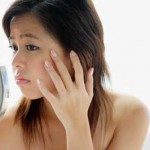Body Dysmorphic Disorder in Teens
 Body Dysmorphic Disorder (BDD) also called Dysmorphic syndrome is a type of mental illness and the person affected by this illness is concerned more and more about the image of his body and is excessively concerned about perceived defects of his or her physical features. The affected person generally complains about the physical features or some parts of the body. In extreme cases the complaint is about all parts of the body or general appearance. This feeling of impairment results in psychological distress, anxiety and consequent effects like social isolation or social phobia.
Body Dysmorphic Disorder (BDD) also called Dysmorphic syndrome is a type of mental illness and the person affected by this illness is concerned more and more about the image of his body and is excessively concerned about perceived defects of his or her physical features. The affected person generally complains about the physical features or some parts of the body. In extreme cases the complaint is about all parts of the body or general appearance. This feeling of impairment results in psychological distress, anxiety and consequent effects like social isolation or social phobia.
Each person suffering from BDD has different reasons for the disorder. These could be a combination of biological, physical and environmental factors. Mental and physical abuse of the child, especially female child, could be a strong reason of development of this disorder. The symptoms generally start to appear at adolescence or early adulthood when the child starts to be cautious of his or her appearance and starts to compare between the actual self and ideal herself. This disorder can be both in male or female child and will need treatment to overcome this disorder.
This disorder in the teens is diagnosed when they become extremely critical about their mirror image and even a slight defect or disfigurement is blown out of proportion. The common complaints are about disfigurement of face, hair, skin or shape of nose. Such people will generally wish that they could change or improve their physical appearance in spite of being normal and having attractive looks. This feeling makes them shy, insecure and secluded. They fail to believe others who tell them that they are normal and not suffering from any physical defect. This disorder is misunderstood as a vanity driven obsession. Such people often look more in the mirror or cover themselves up and avoid the mirror altogether.
Symptoms of body dysmorphic disorder in teen children
Some of the common symptoms of body dysmorphic disorder are:
- Obsessive thought about perceived appearance defects of one’s body.
- Depressive disorder symptoms.
- Social and family withdrawal, loneliness and social isolation.
- Suicidal tendency.
- Anxiety and panic reaction.
- Low self esteem, self cautiousness and thought about others observing you.
- Tendency to move out only at night and to places with inadequate lightning.
- Problem to maintain relationship with any person and inability to focus on something.
- Desire to go in for body modification wherever possible or even when not possible.
The person suffering will try to camouflage oneself with clothes or cosmetics to overcome the feeling of disorder.
Body Dysmorphic Disorder develops in teenagers when they become more concerned about the way they look to others. There could be many more factors involved in BDD and these could occur in isolation or in combination. These could include eating disorders like compulsive overeating, or may be related to nervous phobia. A person may also start to develop this disorder due to teasing or criticism by others. Excessive child abuse by fellow students and psychological torture resulting in traumatic stress could be the starting point of BDD.
The way parenting is done could be a cause of BDD. If the parents place excessive emphasis on the appearance of the child or totally disregard the appearance of the child, this may act as a trigger in the mind of the child. Sexual trauma and insecurity may be other causes of development of this disorder in teens. Especially in case of girls who attain the age of puberty and read magazines depicting photographs of leading models with beautiful figures, may get disorder as they might fail to understand that the models have got heavy makeup to look good.
Treatment
For treatment, study has found that Cognitive Behaviour Therapy is very effective to treat this disorder in teens. In addition, the doctors may suggest administering the child with anti depressant doses. With this medication, psychiatric treatment of the child can be helpful. When the child attains the age of puberty and starts to be more and more careful about their body and appearance due to ever increasing desire of attraction to the opposite sex, the parents should involve in more and more counselling depending upon the requirement of the particular child. At this stage the services of a trained counsellor may also be utilised so that the child does not develop any feeling about his or her body deformities.
If the child insists upon some defects in his or her body, a visit to the doctor may be of great help as the doctor will be able to explain to the child in a better way that she is normal and there is no problem with her looks and appearance.
All these could go a long way in taking the child out of body dysmorphic disorder.